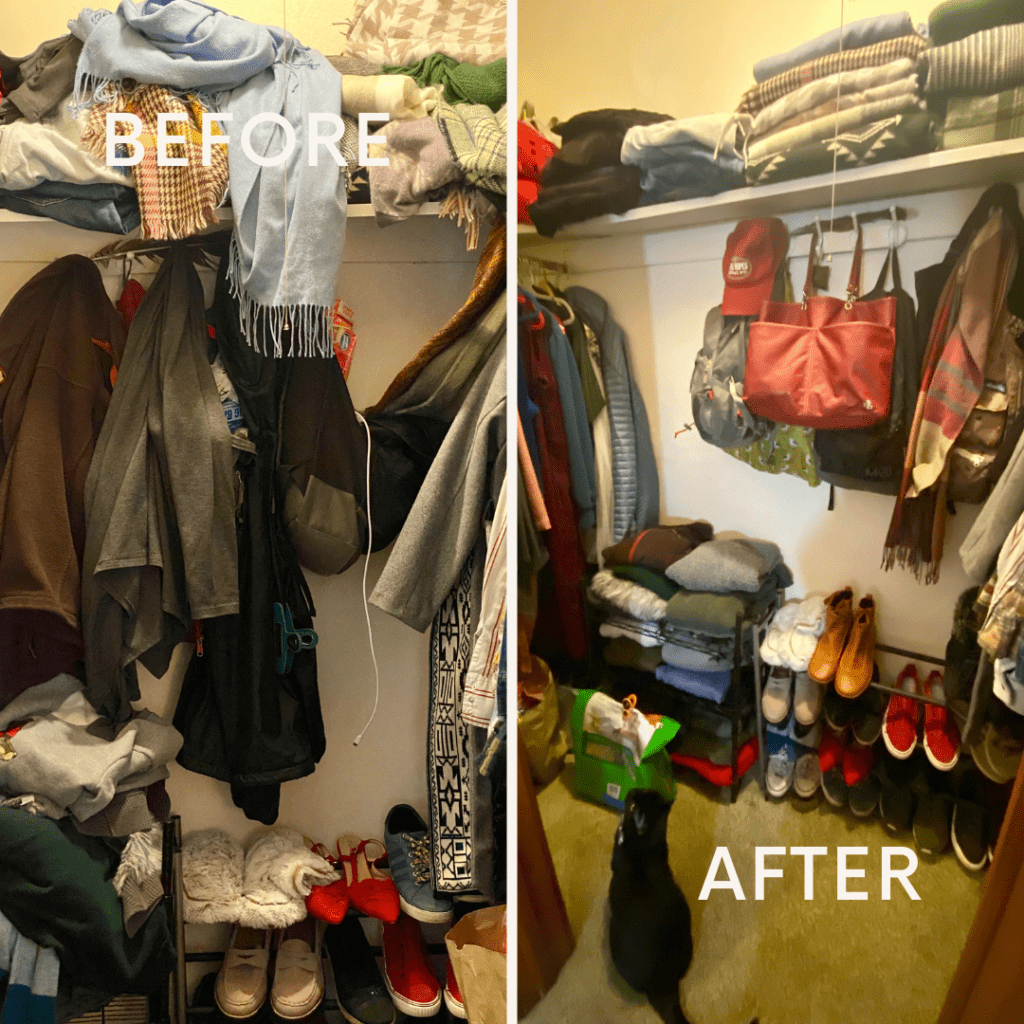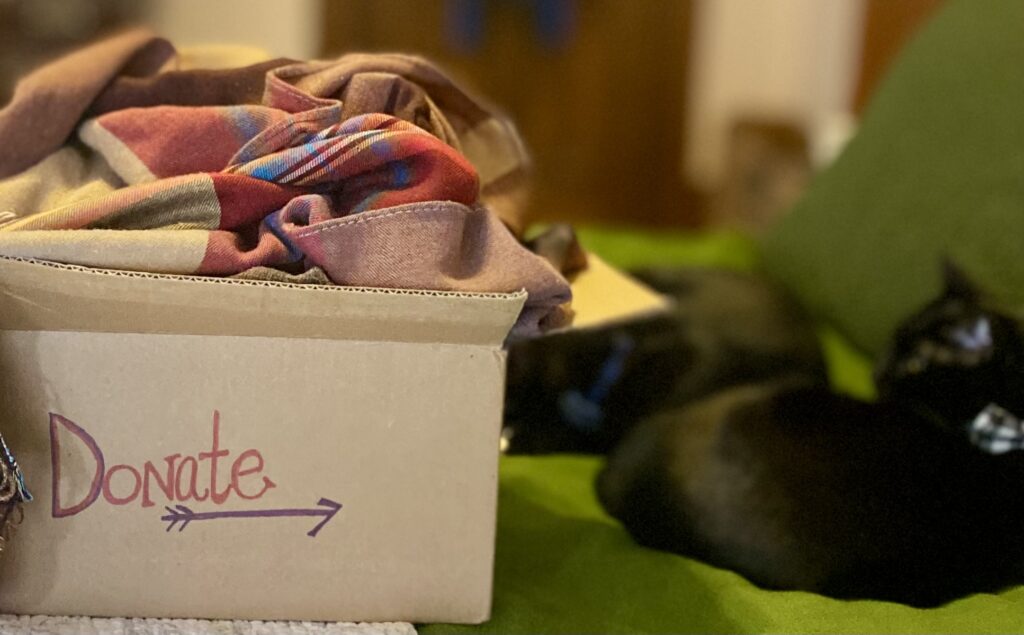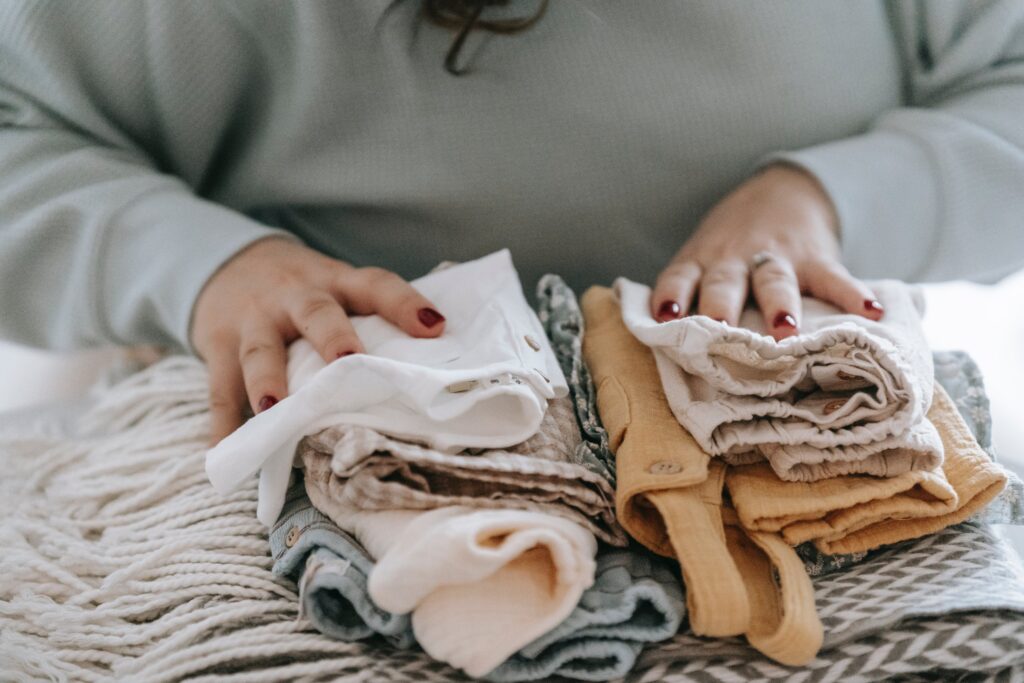Ugh. I have too much stuff.
Around this time of year as we are spending most of our time inside, we can easily feel like we are drowning in our stuff. Our things can very easily build up in the wrong places. And I notice this especially in places that I use every day, like my closet. Smallish spaces that do heavy storage duty, are easy fodder for accumulating things haphazardly- the necessary and useless alike. What’s the solution? A quick organizing, of course!
Doesn’t this sound exciting? What, not at all?
I get it. I’ve been there. The thought of cleaning can produce in us anything from fear, and anger, to intense anxiety. Many of us are still rebels from childhood, as we uncomfortably remember being admonished about the cleanliness of our bedrooms. And in the busyness of our adult lives, organization can be a low priority. There is help available, however. Countless articles on the subject in addition to this one are abundant and easy to find. But if the thought or practice of letting go of your stuff produces overwhelming anxiety, anger or fear, additional help is just a phone call or a click away. There is a list of resources at the end of this article which may be helpful for you. Click here to go there immediately.
But the more that I practice being organized, the easier it is, and the more I want to do it. It’s helpful to think of it as a process to engage in, not necessarily a skill to master. The more we practice, the more natural it becomes. And it doesn’t have to be the all-day awfulness that we’re afraid of, but instead, a pleasant lightening of a burden.
The trick is to find a balance. Time is a precious resource. Too much time spent on organization is wasted, and too little means we waste time anyway constantly searching for, shifting, and fighting with our piles of stuff.
And then there’s the guilt. The: ‘I really should be more organized’, and the: ‘What will people think if they see this mess?’ nonsense that we all struggle with, and end up carrying throughout our lives.
If you want to be free of the weight of all that and are tired of tripping over your things every day, read on.
Come and organize with me- the easy way!

Getting Started
Organizing should save us the frustration and headache of not being able to use the things that we need. At its heart, it’s about function. With that in mind, evaluate the project you want to tackle. For me, it’s my bedroom closet. Somewhere lost in there are the gloves I got for Christmas, my favorite scarf that I haven’t seen for months, and a ripped bag of pretzels that may be leaking pretzels and salt all over the floor. Plus, I have a broken rack where I hang up my bags, I can’t use my hamper, and I don’t have room for all my boots and shoes. I’ve finally had enough, and I can’t stand all of that frustration anymore. Time to clean!
I am going to work on my closet today but this process can be applied to any dysfunctional problem area. The steps are the same.
Ready?
Prayer
Prayer is a great start to any activity. It’s easy to get lost in the thoughts and emotions that are tied to all our tasks. So it’s helpful to take a minute and ask God to lead us to godly living through this particular activity. It helps to avoid the minefield that we can encounter when we wander off a good and productive path into a quagmire of worldly confusion. God can do marvelous things in even a moment, and it’s good to let Him!
Empty the Problem Areas
Next, you want to clear out the area as completely as you can. It’s helpful to start with as much of a clean slate as possible. In some cases, it’s not necessary to empty out every single thing, so apply this as is best for you.
I first took out all of the junk from the floor of my closet. Boy, did that feel great! Besides storing my clothes and shoes, the closet is where I keep essential things like my snacks, cat food, and the bag of bags I reuse for the cats’ litter box (yes, I’m one of those people!) All of that stuff was emptied out, so I could begin with a clean floor space.
If you are working on your closet, and you haven’t gone through the clothes on your racks recently and gotten rid of what you don’t wear, or aren’t excited about wearing, do it now. This is an important thing to do periodically, and keeps your things streamlined and relevant. If it doesn’t fit, is stained, broken down, itchy or uncomfortable- get rid of it! At the very least, put things you might not want in a bag and stick it in a basement, shed or attic until later. If you haven’t missed it and it’s in good condition, have a sale or donate it to someone who can use it.
Now is a good time also to check and make sure that everything that was in your space needs to be there. Oftentimes, objects very easily migrate from one place to another. If you notice something that’s lost its true home, put it in a pile and return all your lost items later all at one time.
Deciding what you should get rid of and what’s worth keeping may be hard at first, but is a process that I now look forward to with excitement. It’s a chance to lighten your load, and not waste valuable time washing, folding, or storing things that you don’t really like anyway.

Throw Out the Junk
No matter what problem area you’re tackling, there are always a few things that should be thrown away. Broken, stained, ripped, scuffed, chipped items- most of the time these things should just be junked. Not to mention actual garbage. Did I mention that I had a ripped bag of pretzels in my closet leaking all over? AND they were stale.
Now, I’m not advocating in favor of a throw-away consumerist culture, but there’s a cost to hanging on to things that you, or anyone else, won’t use. Things have weight, and if it’s too costly or time-consuming for you to try and fix something or hold on to it for any reason, just throw it out.
And this is extremely difficult. I’ve been there myself. That paralyzing question: What if? What if I need it, what if someone can fix it or use it? As someone who has volunteered at countless thrift sales of items donated by other people, I know it’s difficult for others to throw things out as well as well. Sometimes the kindest thing we can do for someone is to accept their junk and get rid of it for them- simply because they are unable to do it themselves.
Take a Minute to Evaluate Your Goals
Now is the time to ask yourself these important questions: How do I need to use this space? What things were bothering me before? Where were the problem areas that were getting in the way of this space functioning well? Is there anything I need to add to aid in that, like extra shelves, baskets, or hooks? Spend as much time as you need thinking before you do anything else. I know that my closet is part storage for the cat supplies that I don’t want sitting out in the room, like food and bags for scooping out the litter box. These things are both rather bulky, yet also need to be accessible. Considerations like these framed my thought process in planning better solutions for the problem areas.
Clean Out the Space
Now that you’ve emptied everything that is practical to do so, take a minute and wipe down any shelves, vacuum any newly exposed floor or carpet, and wipe any dust on hard-to-reach places. I say, ‘take just a minute’ because it’s very easy to get lost in this step. You think, ‘While I’m here, I should…’ and insert any number of cleaning tasks. Before you know it, the day’s over, and you’re only halfway through your organization project. Just remember, the goal of the day is to organize your space, not deep clean every bit of dirt and dust. Keep things in the right perspective- you got this!
Begin Your First Organization
Now is the time to begin organizing. If you didn’t take everything out of your space, look at what is there, and make everything neat and easily accessible. The goal is to be able to see what you have and reach it, but not have anything in the way and blocking how you use it. The less you have to move things around daily, the better.
For my clothes racks, I have a simple system of separating by clothes by type that’s worked for me seamlessly for years. Short-sleeve shirts, long-sleeves, coats, blazers, dresses, cardigans, and pants are my categories. This makes putting away clean clothes a breeze, and I can always find what I’m looking for. Once I remove anything from its hanger, they always go along the wall in one specific spot to keep them neat. Organize your things into groups by what you use most, and by how you use your particular space.
In addition, I also folded my collection of scarves on my shelf (not stacked too high so that I could reach everything without a step stool), organized the shoes on my shoe rack, and folded sweaters on my floor shelf.

Add Back Everything Else
Now that everything in your closet is already nice and neat, go ahead and move back everything else that you removed. Be careful to keep those two most important principles in mind- is it functional? Is it accessible? You need your things to be organized so you can easily see what you have, and reachable, so you can use it when you need to.
I moved my bag of bags to a spot that was a little more tucked away, fixed my broken rack, and added an extra hook for my purse- a plant hanger since that’s all I had. My shoes that I actually wear went back in, organized on the shoe rack, along with my snack basket, and the bag of cat food- out of the way but easily reached when the kitties need a meal (always, right?).
Make Changes Where Needed
Now you can step back and see if anything needs to be rearranged, changed, or reconfigured. Over the next few days, see how the space functions. If it isn’t easy to store what you need it to, or if you find you have to do a lot of rearranging to get things out and back in easily, give it another think, and see what you can come up with.
Add Décor
This step is fun, though I’m not in favor of making spaces overly decorative. If décor is too fussy, gets dusty, or is overly fragile, it usually doesn’t last long in our house. However, functional doesn’t need to be drab. I am in favor of finding beauty in ordinary, functional things. Plain, useful, repurposed, or thrifted items often are overlooked and too quickly replaced by newer cheaper and trendier items.
That being said, we all have those little knick-knacks and keepsakes that brighten our days. Now is a good time to see if anything you love can be added. I keep my collection of feathers on my rack so they stay out of reach of the cats, and added a favorite hat and scarf to a hook. Play around with what you like to see every day and looks good to you.
Finally, toss the garbage, return all the things that need to be returned to their true homes, and you’re done!
Take a minute in gratitude for a task completed.
Final Thoughts
Organization isn’t just for the professionals or shouldn’t be relegated to fancy magazines. We all can learn to love lightening up the weight of our unnecessary stuff. The result is that we will be freer, happier, and more productive. We will have more time for the things that we love to do, and the people we care about.
And organization can be accomplished simply and easily. It doesn’t need to be burdensome or painful, and can eventually be something we look forward to with appreciation- and not dread!
You can do this!
If you or someone you know struggles with the fear and anxiety attached to issues around letting go or getting rid of things, these and other places may help:
National Institute of Mental Health
Another great resource is your local church. Don’t have one? click here to get in touch with us here, and we can help.
What do you think, are you inspired to organize? Let us know if you found this article helpful. Drop us a comment below, or send an email. I’d love to continue the conversation!


Some great ideas. When I get home, I need to begin working through stored items. The first group is my Aunt’s artwork, which is stored on 4 shelving units in the garage. But that isn’t organization, that’s getting it sold. I remember the girls working the Red Door telling how they got to be really good at disposing of things donors couldn’t bring themselves to toss.
Sharon, I think of the Red Door often! Such a wonderful ministry, and one that we miss. Selling your Aunt’s artwork sounds interesting. What kind of art is it?
I love how thoughtful and organized that this post is, especially framing it with prayer and gratitude. It definitely inspires me to organize my stacks of papers that are ever accumulating. Love the “bag of bags” reference!
Good to hear Josie! We’d love to hear how it goes.
Thanks Josie- all good Wisconsinites, wherever they may be living, should have a bag of bags. I was wondering- did you ever get an email from me somewhat recently?